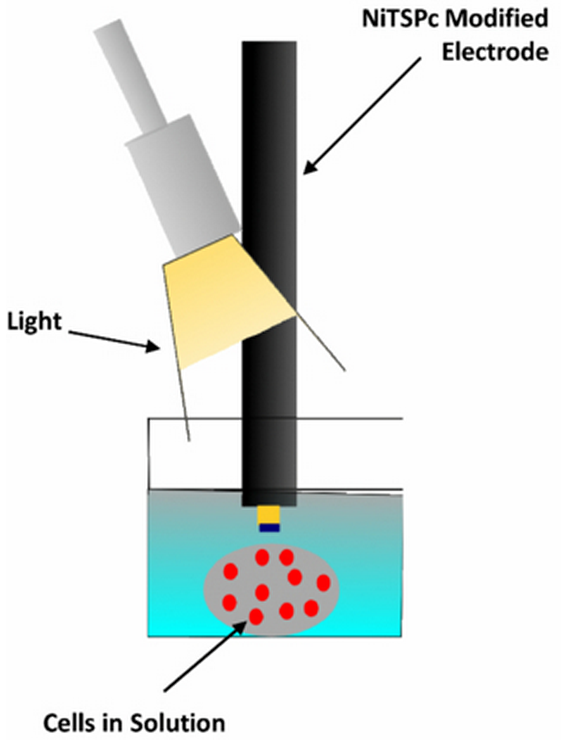A step toward creating a bio-robot hybrid
December 3, 2012

Researchers converted an optical signal into a chemical signal (NO) in the cells; an electrode detected the NO and converted it into an electrical signal (credit: LiOrr Yarkoni et al./Bioinspiration & Biomimetics)
Would it be possible to integrate biological components with advanced robotics, using biological cells to do machine-like functions and interface with an electronic nervous system — in effect, creating an autonomous, multi-cellular biohybrid robot?
Researchers Orr Yarkoni, Lynn Donlon, and Daniel Frankel, from the Department of Chemical Engineering at Newcastle University think so, and they’ve developed an interface to allow communication between the biological and electronic components*, described in an open-access article in Bioinspiration & Biomimetics journal.
One of the major challenges in developing biohybrid devices is in the interface between biological and electronic components. Most cellular signals are simply not compatible with electronics.
However, manipulation of signal transduction pathways is one way to interface cells with electronics. So the researchers genetically engineered protein cells from a Chinese hamster ovary to produce nitric oxide (NO) in response to visible light. Here’s how:
1. They genetically engineered the nitric oxide synthase protein eNOS by inserting a light-oxygen-voltage (LOV) domain into the gene. This created a photoactive version of the eNOS protein that could produce NO in response to excitation by visible light.
2. They attached these mutant cells to a nickel tetrasulfonated
phthalocyanine (NiTSPc)-modified platinum electrode that detected the NO and converted it into an electrical signal.
In summary: they converted an optical signal into a chemical signal (NO), and converted the chemical signal into an electrical signal. This signal could, in turn, be used to control a robot.
Unlike solid-state photodetectors, the cells have the ability to self-reproduce and the potential to combine input signals to perform computation. With rapid advances in synthetic biology, manipulation of metabolic pathways to integrate with machinery will some day allow the development of advanced robotics, the researchers suggest.
* The research is part of a bigger project to build a swimming bio-robot hybrid called Cyberplasm, previously covered on KurzweilAI.

Cyberplasm Vehicle
